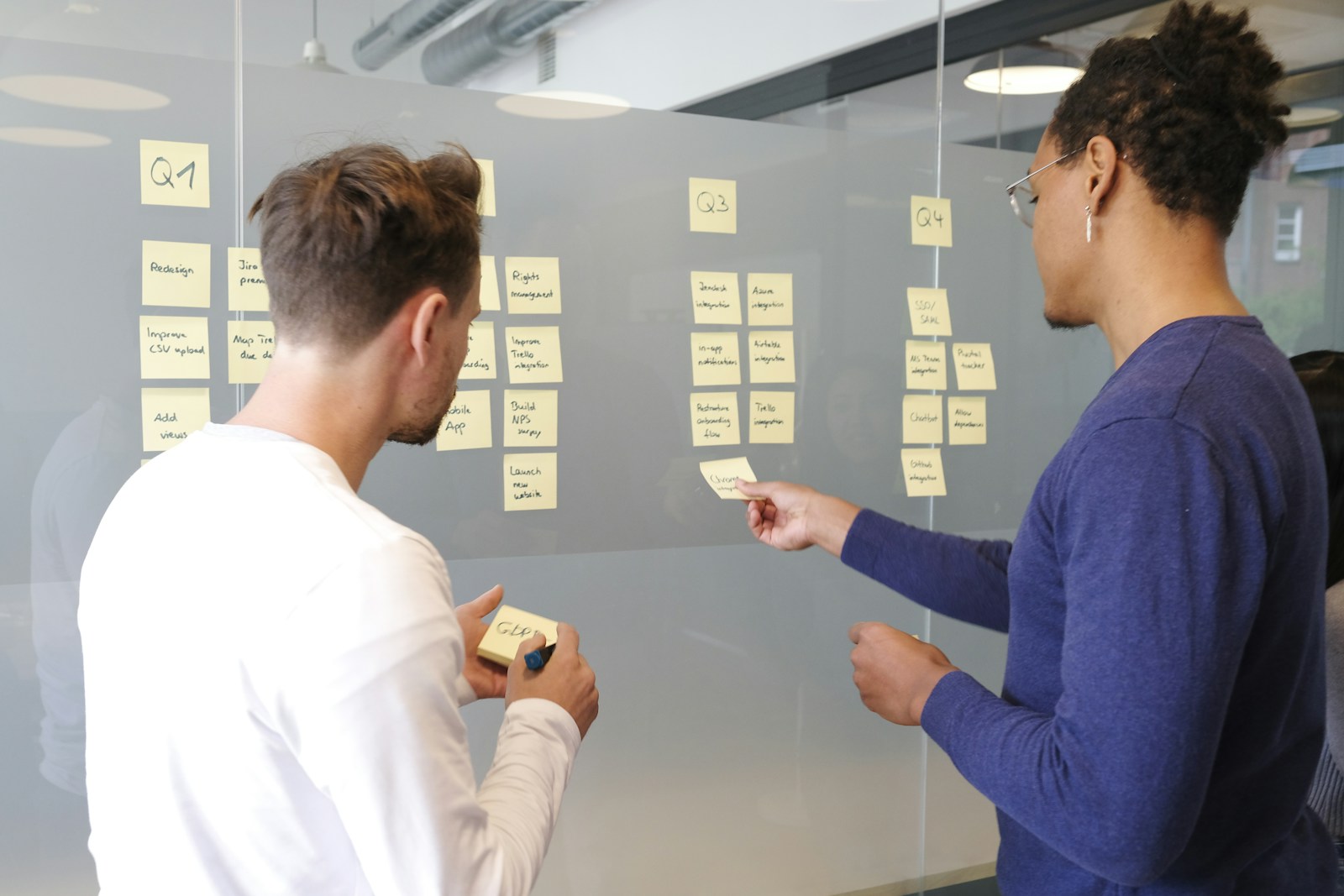In an era of rapid technological advancements, shifting market dynamics, and global competition, Australian companies are increasingly required to manage organisational change. Whether driven by internal or external forces, change has become a necessity for survival and growth. Yet, it is one of the most challenging processes a company can undergo. Managing change effectively is crucial to maintaining business continuity, employee engagement, and organisational productivity. This blog post explores how Australian companies can successfully navigate change, ensuring that both leadership and staff are aligned in achieving long-term business goals.
The Drivers of Change in Australian Companies
Change management in the Australian business context often arises from several key triggers:
- Technological Evolution: The rapid pace of digital transformation, including the rise of artificial intelligence, automation, and data analytics, has created both opportunities and challenges for businesses. Companies are automating repetitive tasks, investing in AI for customer service, and using data to inform decisions. This requires not only financial investment but also changes to business processes, workflows, and staff roles.
- Globalisation: Australian businesses face increasing global competition, from multinational corporations to international startups. The Australian economy is highly integrated into the global market, meaning that companies must remain agile in response to international trade policies, exchange rate fluctuations, and global supply chain disruptions. This global perspective requires Australian companies to constantly adapt their strategies to remain competitive.
- Regulatory Changes: Australia is no stranger to regulatory shifts, particularly in areas like privacy, industrial relations, environmental sustainability, and corporate governance. For instance, the Australian Government’s tightening of privacy laws in response to cyber threats requires companies to revisit how they handle data and ensure compliance with updated regulations. Similarly, changes in industrial relations law can affect how companies manage their workforce.
- Economic Pressures: The Australian economy faces its own unique challenges, including fluctuating housing markets, variable interest rates, and the economic impacts of natural disasters like bushfires and floods. These pressures can force companies to change their operations—whether that means restructuring to remain financially viable or pivoting their business model to adapt to new market conditions.
- Pandemic-Driven Changes: The COVID-19 pandemic forced Australian companies to reassess everything from their workplace practices to their supply chains. Many companies shifted to remote work models, re-evaluated their office space needs, and incorporated new health and safety protocols. Even as the pandemic recedes, its effects on the business landscape continue to drive organisational change.
Understanding these drivers is the first step towards implementing an effective change management strategy. The clearer the company is about why change is needed, the better positioned it will be to communicate this need to employees and stakeholders.
The Role of Leadership in Organisational Change
Effective organisational change begins with leadership. Australian companies that have successfully navigated change have leaders who embrace transparency, foster trust, and guide their teams through uncertainty. Leadership sets the tone for the entire organisation, and during periods of change, the importance of strong leadership cannot be overstated.
- Visionary Leadership: Leaders need to articulate a clear vision of the future that helps employees understand the end goal of the change. This vision must go beyond simply stating what will change; it should also address the “why” behind the change. For instance, when an Australian financial services company transitioned to a digital-first approach, the leadership not only outlined the specific changes (such as the adoption of new software and workflows) but also explained how these changes would position the company as a market leader in customer experience.
- Communication: Open, honest, and regular communication is essential during times of change. Leaders should communicate not only the what, why, and how of the change but also acknowledge the challenges that may arise along the way. Employees need to feel included and informed at every stage. Communication should be two-way, with leaders actively listening to employee concerns and feedback. For instance, during a major restructuring at a Sydney-based telecommunications company, the CEO held regular town hall meetings where employees were encouraged to ask questions and voice concerns, ensuring that communication flowed in both directions.
- Empathy and Emotional Intelligence: Change is inherently disruptive, and leaders must demonstrate empathy by acknowledging the emotional impact it can have on employees. Whether it’s fear of job loss, anxiety about learning new skills, or uncertainty about the future, leaders who show understanding and offer support can significantly reduce resistance to change. For example, in a Brisbane manufacturing company undergoing a major technology upgrade, the leadership team offered one-on-one coaching sessions to employees struggling with the new systems. This not only helped ease the transition but also boosted morale.
- Resilience and Adaptability: Change rarely happens smoothly. Leaders must be adaptable and resilient in the face of setbacks. Demonstrating confidence and calmness in challenging times reassures employees and stakeholders that the organisation will navigate the transition successfully. When an Australian retail company faced delays in rolling out its new e-commerce platform, the leadership team quickly adapted by revising the project timeline and communicating the changes to staff and customers, maintaining trust and momentum despite the setback.
Engaging Employees in the Change Process
One of the most significant challenges in managing change is gaining employee buy-in. Resistance to change is a natural response, particularly when employees fear job losses, increased workloads, or skill obsolescence. However, when employees are engaged in the change process, they are more likely to embrace it and contribute to its success.
- Involvement in Decision-Making: Wherever possible, involving employees in decision-making processes fosters a sense of ownership. When employees feel they have a voice in shaping the change, they are more likely to support it. For instance, a large Australian healthcare provider undergoing an organisational restructure involved frontline employees in focus groups to gather input on how the changes would impact their daily work. This not only helped shape a more effective change plan but also reduced resistance among staff.
- Training and Development: Change often requires new skills, and employees may feel anxious about their ability to succeed in a new environment. Investing in training and development helps employees feel more confident and better prepared for the changes ahead. For example, a Brisbane-based bank that introduced a new customer relationship management (CRM) system provided comprehensive training sessions, complete with hands-on workshops and ongoing support. Employees felt empowered to adapt to the new system, which led to a smoother transition.
- Transparency About the Impact on Roles: Employees need to understand how the change will impact their roles and what will be expected of them during and after the transition. Setting clear expectations about job responsibilities, performance metrics, and timelines reduces confusion and helps employees adjust more quickly. For instance, a Perth-based mining company undergoing a digital transformation project clearly communicated to its workforce that while some roles would evolve, there would be no immediate job losses. This transparency helped alleviate fears and kept employees focused on the tasks at hand.
- Providing Support Systems: Change can be stressful, and companies should offer support systems to help employees navigate the transition. Employee assistance programs (EAPs), coaching, and mental health resources can be valuable tools in helping staff manage the emotional and psychological impacts of change. A Melbourne-based technology firm undergoing a major restructuring offered all employees access to EAP services, which included confidential counselling and mental health support. This gesture demonstrated that the company cared about its employees’ well-being, fostering goodwill and resilience during the transition.
Building a Change-Ready Culture
Creating a culture that embraces change is essential for long-term success. Companies with a change-ready culture are better equipped to adapt quickly and effectively to new challenges. This culture is built on agility, innovation, and a commitment to continuous improvement.
- Fostering Agility and Innovation: A change-ready culture encourages employees to be adaptable and to embrace innovation. Companies that promote a mindset of continuous improvement are better positioned to respond to changes in the market or industry. For example, an Adelaide-based logistics company implemented a culture of innovation by encouraging employees to submit ideas for process improvements. This proactive approach helped the company stay ahead of competitors and adapt to changes more effectively.
- Empowering Change Champions: Identifying and empowering change champions—employees who are enthusiastic about the change—can help drive positive momentum. These champions can serve as role models, offering peer support and encouraging others to embrace the changes. For instance, during a major organisational change at a Sydney-based insurance company, change champions were identified in each department to lead by example and provide on-the-ground support for their colleagues.
- Celebrating Milestones and Successes: Recognising and celebrating successes is crucial for reinforcing positive behaviour during times of change. Whether it’s reaching a project milestone, completing a phase of the change process, or achieving business goals, celebrating these wins helps maintain morale and motivation. A Canberra-based government agency undergoing a major restructuring celebrated each stage of the process by holding team events and acknowledging the hard work of staff. These celebrations helped build a sense of accomplishment and kept employees engaged throughout the transition.
Overcoming Barriers to Organisational Change
Managing change is not without its challenges. Australian companies often face barriers that can derail change efforts if not addressed proactively. By identifying and mitigating these barriers early on, companies can increase the likelihood of success.
- Resistance to Change: Resistance to change is one of the most common barriers, often driven by fear of the unknown or discomfort with new processes. To overcome resistance, companies must actively listen to employee concerns and address them with empathy and transparency. Creating open channels of communication and providing opportunities for employees to express their thoughts and feelings can help reduce resistance.
- Lack of Resources: Change initiatives often require additional resources, whether in the form of time, money, or personnel. Failing to allocate sufficient resources can lead to incomplete or poorly executed changes. Companies should ensure that they have the necessary resources in place before embarking on a change initiative. This includes budgeting for new technology, hiring additional staff, or providing the tools and equipment needed for the transition.
- Inadequate Planning and Direction: A lack of clear direction can derail even the best-intentioned change initiatives. Without a comprehensive plan that includes specific goals, timelines, and benchmarks, employees and management alike may become confused and frustrated. It’s crucial for companies to develop a detailed change management plan before implementing significant changes. This plan should be reviewed regularly and adjusted as necessary to keep the process on track.
- Cultural Misalignment: Sometimes, organisational change initiatives clash with the company’s existing culture. For example, a company with a highly hierarchical structure might struggle to implement a more collaborative, agile approach to work. Before implementing change, leaders must evaluate whether the company’s culture supports the desired changes. If not, they may need to take steps to shift the culture incrementally to align with the new direction.
Case Study: Woolworths and Organisational Change
Woolworths, one of Australia’s largest supermarket chains, provides an excellent example of navigating organisational change effectively. Faced with increasing competition and evolving consumer preferences, Woolworths embarked on a comprehensive transformation to enhance its digital capabilities, streamline operations, and improve customer experiences.
The leadership at Woolworths clearly communicated their vision to become a more customer-centric and digitally integrated retailer. By investing heavily in technology, such as advanced analytics for supply chain optimisation and personalised marketing through data-driven insights, Woolworths positioned itself as a leader in the retail sector. Moreover, they focused on employee engagement by providing extensive training and upskilling programs to support staff through the digital transition.
Woolworths’ proactive approach to change management, from transparent communication and strong leadership to continuous employee development, helped the company adapt to the changing market landscape. By embracing innovation and building a resilient workforce, Woolworths transformed challenges into opportunities for growth, setting a benchmark for other Australian companies navigating change.
The Future of Change Management in Australian Companies
As Australian companies continue to navigate a rapidly changing business landscape, the ability to manage change effectively will remain a critical factor in their success. The key to managing change is not just reacting to external pressures but proactively fostering a culture of agility, resilience, and continuous improvement.
Companies that invest in leadership development, engage employees at every level, and build a culture that embraces change will be better positioned to thrive in the face of future challenges. As Australia moves further into the digital age and the global economy becomes increasingly interconnected, change management will become an even more essential component of organisational strategy.
Embracing Change for Sustainable Success
Navigating organisational change is one of the most complex challenges Australian companies face today. Driven by technological advancements, economic pressures, regulatory shifts, or global competition, change is not just inevitable—it’s essential for growth. Companies that approach change with a clear strategy, strong leadership, and an engaged workforce will be better positioned to thrive.
To turn change into an opportunity for innovation and success, Australian companies must foster a change-ready culture, provide employees with the necessary tools and support to adapt, and proactively address common barriers. By embracing change, communicating transparently, and empowering their teams, businesses can transform uncertainty into a driving force for progress.
Take the first step towards a stronger, more adaptable future. Assess your organisation’s readiness for change today, invest in leadership development, and actively engage your workforce in the process. By doing so, you will not only survive but excel in an ever-evolving world.
Need expert guidance? Partner with Peoplemix Consulting. Our team specialises in building high-performing, productive workplaces and guiding companies through complex organisational changes. With a deep understanding of change management, strategic HR consulting, and industrial relations, we can help you develop a tailored strategy to navigate change effectively. Reach out to Peoplemix Consulting today and let us help you unlock the full potential of your organisation.
References
- Kotter, J. P. (2012). Leading Change. Harvard Business School Press.
- Lewin, K. (1951). Field Theory in Social Science: Selected Theoretical Papers. Harper & Row.
- Hayes, J. (2022). The Theory and Practice of Change Management. Red Globe Press.
- Prosci. (2023). Change Management: What Is Change Management?. Retrieved from Prosci.
- Australian Government Digital Transformation Agency. (2018). Digital Transformation Strategy 2018-2025. Retrieved from Digital Transformation Agency.
- Queensland Government. (2021). The Future of Work in Queensland to 2030: Evolution or Revolution? Retrieved from Queensland Treasury.
- Burnes, B. (2020). Managing Change: A Strategic Approach to Organisational Dynamics. Pearson.
- Hodges, J. (2021) Managing and Leading People through Organizational Change: The Theory and Practice of Sustaining Change through People. Kogan Page
- Woodman, R. W., & Pasmore, W. A. (2013). Research in Organizational Change and Development. Emerald Group Publishing.
- Australian Government Fair Work Ombudsman. (2023). Regulatory Changes in Australian Business. Retrieved from Fair Work Ombudsman.
- Australian Institute of Company Directors. (2024). Organisational Culture. Retrieved from AICD.
- Woolworths Group Limited. (2021). Woolworths Group Annual Report 2021: Delivering on Our Strategic Priorities. Retrieved from Woolworths.













0 Comments